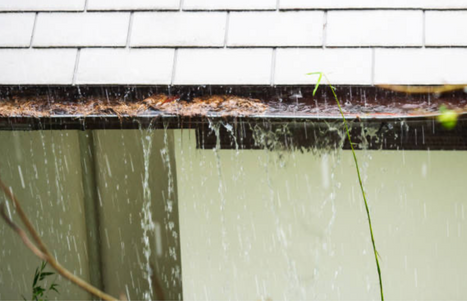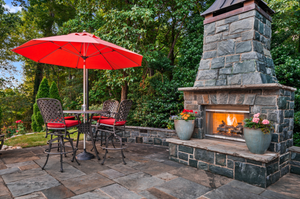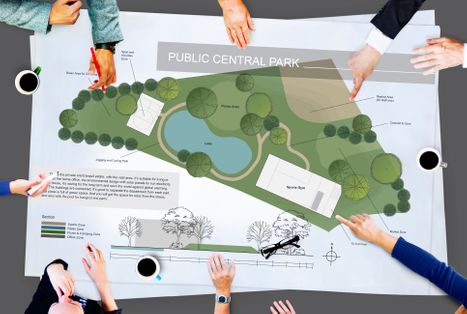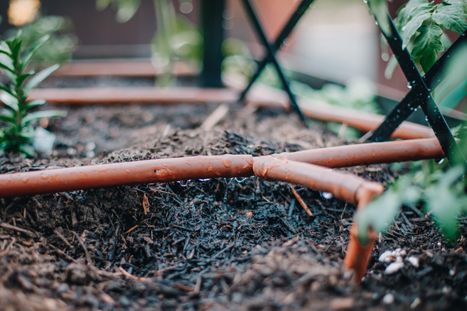Blog
Reasons Why To Fix Your Lawn In The Fall
Larry Martin
**Why Fall is the Unsung Hero of Yard Repair: The Ultimate Season for Reshaping, Recontouring, and Reseeding**
Ah, fall. The season of crunchy leaves, pumpkin spice everything, and… yard repair? Yes, you heard that right. As the temperature dips and the days shorten, your yard is quietly begging for some TLC. Now, you might be thinking, "Isn't fall when I should be sipping hot cocoa and binge-watching spooky movies, not lugging around a shovel?" But here’s the thing: fall is actually the MVP of yard care. It’s the golden hour for reshaping, recontouring, and reseeding your lawn. Don't believe me? Grab your garden gloves and read on. By the time you're finished, you might even be excited to give your yard the makeover it deserves.
### The Weather Knows What’s Up
First and foremost, the weather in the fall is practically tailor-made for yard work. In summer, it’s often too hot to do much more than melt into your lawn chair, too tired to do anything beyond complaining about the heat. And let’s not even talk about how hard it is to make grass grow in 90-degree heat. The sun’s relentless rays can dry out seeds before they even have a chance to settle into the soil.
Fall, on the other hand, brings cooler temperatures and mild sunlight—perfect for germination. This season’s weather is like the perfect workout partner: not too harsh, not too lazy. The soil is still warm from the summer, so seeds can sprout, but the cooler air means they won’t dry out immediately. It’s like giving your lawn a refreshing drink of water while keeping it at a comfortable room temperature. And while you’re at it, reshaping and recontouring your lawn won’t feel like you’re walking on the surface of the sun.
moreGutters, Guts, and Glory: Why Drainage Around Your Foundation Isn’t Optional
Larry Martin
Let’s start with a hard truth:
Water is sneaky.
Water is petty.
Water will find the tiniest crack in your foundation and move in like a roommate who doesn't pay rent, eats all your snacks, and ruins your hardwood floors.
You might think your home is safe — I mean, it has walls, a roof, and a nice welcome mat. But if your gutters and drainage system aren’t working properly, water doesn’t care. It will casually infiltrate your basement, buckle your driveway, and grow a petri dish of mold in your drywall like it’s auditioning for a horror film.
In this blog, we’ll dig (pun intended) into the importance of gutters and foundation drainage, and give you a step-by-step guide to check your home's defenses before Mother Nature tries to flood your castle.
🌊 The Great Moisture Menace: Why This Even Matters
Let’s get one thing straight: water + your home’s foundation = eventual disaster.
Here's what poor drainage can do:
- Cracks in foundation walls (hello structural repair bills)
- Basement leaks and the birth of new lifeforms in your carpet padding
- Mold growth that triggers allergies, lawsuits, and existential dread
- Shifting soil that causes uneven floors and doors that won’t shut (aka haunted house syndrome)
- Ruined landscaping — say goodbye to those hydrangeas you planted during your “gardening era”
🔥 Backyard Fire Pit Planning: Avoid Flaming Mistakes (and Other Hot Tips)
Larry Martin
Let’s be honest. The idea of a backyard fire pit sounds romantic and rustic, like a scene straight out of a lifestyle magazine:
You.
A sweater.
A gentle breeze.
A fire pit glowing with warmth.
Maybe a golden retriever sleeping by your feet.
Probably a charcuterie board, because you’re classy like that.
But let me tell you — if you plop that fire pit into the wrong spot, your dream turns into:
You.
A headlamp.
Fighting mosquitos.
Knee-deep in puddle water.
While grass attempts a hostile takeover.
To spare you from this smoky chaos, we’ve compiled everything you need to consider when choosing the ultimate fire pit area in your backyard — with some humor, facts, and bullets for your convenience.
1. 🔦 Evening Shade: Because No One Likes Sunburned S'mores
Consider:
- When will you actually be using the fire pit?
- Answer: At night. Duh.
- But here’s the twist — depending on your property layout, that “evening” might come with full exposure to the setting sun’s last stand, AKA nature’s heat lamp.
How to Plan the Layout of Landscape Beds Without Losing Your Mind (or Your Shovel)
Larry Martin
Ah, the great outdoors — where grass grows, weeds plot revenge, and homeowners stare at their bland yards wondering, “How hard could it be to make this pretty?”
If you’re a DIY homeowner in the Southeast U.S. looking to upgrade your landscaping without accidentally flooding your crawlspace, planting over the gas line, or creating a mosquito habitat the size of a kiddie pool, you’ve come to the right place.
Let’s break down how to plan the layout of landscape beds — step by step — with a splash of humor, a dash of wisdom, and absolutely no judgment for that patch of lawn you’ve been "getting around to" for three years.
Step 1: Walk Your Kingdom
Before you do anything drastic (like dig), walk your yard. Morning coffee in hand. Barefoot, if you're feeling brave and the fire ants are feeling merciful.
Look at the spaces you want to transform and ask yourself:
- Where does the sun hit throughout the day?
- Are there any soggy areas that never seem to dry out?
- Do I trip over the same exposed tree root every time I mow?
Why Border Magic Is The Best: The Long-Term Value of Border Magic Concrete Curbing vs. Cheap Plastic Edging
LARRY MARTIN
When it comes to landscaping, the aesthetics and durability of your outdoor space play a pivotal role in defining the curb appeal of your property. Among the many options available to homeowners, concrete curbing stands out as an excellent choice—particularly when compared to cheaper alternatives like plastic edging or steel borders. One of the best examples of such high-quality curbing is Border Magic Concrete Curbing. This professional-grade concrete curbing solution offers a host of benefits that make it a far better investment than inexpensive plastic edging and other alternatives. In this article, we will look at why choosing Border Magic concrete curbing not only enhances the visual appeal of your property but also provides long-term value, peace of mind, and low-maintenance benefits that cheap plastic edging can’t match
1. Durability: Border Magic’s Ten-Year Warranty vs. Plastic Edging’s Short-Term Lifespan
When evaluating the value of any product or service, durability is one of the most important factors to consider. Plastic edging, although initially cheaper, often does not stand up to the test of time. Over time, plastic borders can crack, warp, or fade due to exposure to sunlight, moisture, and temperature fluctuations. This degradation ultimately results in you having to replace the edging every few years, which adds up to a significant expense.
moreCaring for Your Shrubs and Plants in the Summer Heat: A Guide to Proper Watering, Hydration Signs, and Supplements for Vibrance
LARRY MARTIN
Summer is a time for growth and abundance in the garden, but the intense heat can also be a major stressor for your plants and shrubs. With the sun beating down and long stretches of hot, dry weather, ensuring that your plants stay hydrated and healthy becomes crucial. This article will walk you through the best practices for watering your shrubs and plants during the summer months, how to spot signs of dehydration, and which supplements can boost your plants’ color and vibrance in the summer heat.
Understanding the Summer Heat’s Effect on Plants
During the summer, high temperatures increase the evaporation rate of moisture from both the soil and the leaves of plants. This results in water stress for many plants, especially if the temperatures rise above 90°F for an extended period. Without proper hydration and care, plants can begin to wilt, become discolored, and show signs of stunted growth.
Shrubs and plants in containers are often more vulnerable than those planted in the ground. Containers dry out faster, which means you’ll need to pay even closer attention to their hydration needs.
The Importance of Proper Watering
more





